Considering college? You are not alone. For many high school seniors, the application process can feel like navigating a maze blindfolded. One of the first big decisions you will face is choosing how and when to apply. Early Decision (ED) and Regular Decision are the two main paths, but understanding the difference is key to a successful application season.
Early Decision is a binding agreement where you commit to attending a college if accepted. Regular Decision, on the other hand, allows you to apply to multiple schools and weigh your options before making a choice.
This article will walk you through the ins and outs of early decision vs regular admission, including the pros, the cons, and the strategies to help you make the right choice for your unique situation. Think of this as your guide, offering the insights and data needed to navigate these crucial choices with confidence.
Early Decision vs. Regular Decision: What’s the Difference?
The college application timeline has two main milestones: Early Decision and Regular Decision. Each option comes with its own set of rules and deadlines. Understanding these distinctions is the first step in figuring out the right fit for you.
Early Decision Explained
Early Decision is an option where you apply to your first-choice college earlier than the regular deadline. If accepted, you are committed to attending that school. This commitment is binding, meaning you must withdraw any other applications.
- Binding Agreement: The defining feature of Early Decision is its binding nature. By applying ED, you promise to enroll if accepted.
- Earlier Deadlines: ED deadlines typically fall in November, with decisions released in December. This early timeline lets you know your fate well before the regular admission cycle concludes.
- One ED Application: You can only apply to one school under Early Decision. This emphasizes the commitment you are making.
- Higher Acceptance Rates: ED programs often have higher acceptance rates than Regular Decision. This can seem enticing, but it is crucial to understand why this is the case (more on this later).
Regular Decision Explained
Regular Decision is the standard application process for most colleges. It allows you to apply to multiple schools, compare financial aid offers, and make an informed decision without a binding commitment.
- Non-Binding: Unlike Early Decision, Regular Decision is not binding. You can apply to as many schools as you like and choose the best option after receiving all your acceptance letters.
- Later Deadlines: Regular Decision deadlines are typically in January or February, with decisions released in March or April. This later timeline gives you more time to prepare your applications and gather information.
- Multiple Applications: You can apply to multiple schools under Regular Decision. This increases your chances of getting accepted somewhere and gives you leverage when negotiating financial aid.
- Lower Acceptance Rates: Regular Decision programs tend to have lower acceptance rates than Early Decision. This is because the applicant pool is larger and more diverse.
Key Differences: A Quick Recap
To sum it up, here is a handy table outlining the key differences between Early Decision and Regular Decision:
| Feature | Early Decision | Regular Decision |
| ——————- | ———————————- | ———————————– |
| Binding | Yes | No |
| Deadline | November | January/February |
| Decision Date | December | March/April |
| Application Limit | One | Multiple |
| Acceptance Rates | Often Higher | Often Lower |
The Pros and Cons of Early Decision
Choosing between Early Decision and Regular Decision is not a one-size-fits-all situation. Each path offers its own advantages and disadvantages. It’s a must to weigh these carefully to determine the right approach for you.
The Advantages of Early Decision
Applying Early Decision can offer several benefits, especially if you are certain about your college choice.
- Increased Chances of Acceptance: ED programs often have higher acceptance rates. According to data from the National Association for College Admission Counseling (NACAC), the average ED acceptance rate is often higher than the RD acceptance rate. For example, a highly selective college might admit 25% of ED applicants but only 8% of RD applicants.
- Demonstrated Interest: Applying ED shows the college that you are genuinely interested in attending their school. Colleges value demonstrated interest, as it suggests a higher likelihood of enrollment if accepted.
- Reduced Stress: Knowing your college plans early can alleviate stress during your senior year. Receiving an acceptance letter in December allows you to enjoy your final months of high school without the pressure of waiting for multiple decisions.
- Early Access to Resources: Some colleges offer early access to resources, orientation programs, and housing selection for students admitted through Early Decision. This can give you a head start in preparing for college.
The Disadvantages of Early Decision
Despite the potential advantages, Early Decision also has its drawbacks. These should be considered before making a commitment.
- Binding Commitment: The most significant disadvantage is the binding commitment. If accepted, you are obligated to attend that college, regardless of financial aid offers or changes in your circumstances.
- Limited Financial Aid Comparison: Applying ED restricts your ability to compare financial aid packages from multiple schools. You might miss out on a more generous offer from another college.
- Pressure to Decide Early: The early deadlines can create pressure to decide on a college before you are truly ready. You might not have had enough time to visit campuses, explore different academic programs, or fully consider your options.
- Potential for Regret: If you later discover that another college is a better fit or that you cannot afford the cost of attendance, you might regret your decision to apply ED. Breaking the binding agreement can have consequences, such as damaging your reputation with the college.
The Pros and Cons of Regular Decision
Regular Decision offers a more flexible approach to the college application process. However, it also comes with its own set of advantages and disadvantages.
The Advantages of Regular Decision
Choosing Regular Decision can provide you with more time, flexibility, and options during the college application process.
- Non-Binding Commitment: The primary advantage of Regular Decision is that it is non-binding. You can apply to multiple schools and choose the best option after receiving all your acceptance letters.
- Financial Aid Comparison: Applying RD allows you to compare financial aid packages from multiple schools. This gives you leverage when negotiating aid and ensures you can make an informed decision based on affordability.
- More Time to Decide: The later deadlines give you more time to visit campuses, explore different academic programs, and fully consider your options. You can make a more informed decision when you are ready.
- Flexibility: Regular Decision offers flexibility if your circumstances change. You are not locked into a binding agreement and can adjust your plans as needed.
The Disadvantages of Regular Decision
Despite the flexibility, Regular Decision also has its drawbacks. These factors should be considered before opting for this path.
- Lower Acceptance Rates: RD programs typically have lower acceptance rates than Early Decision. This means that competition for admission can be more intense.
- Increased Stress: Waiting for multiple decisions can increase stress during your senior year. You might feel anxious and uncertain while waiting to hear back from colleges.
- Later Access to Resources: Students admitted through Regular Decision might have later access to resources, orientation programs, and housing selection. This can put you at a slight disadvantage compared to ED students.
- No Demonstrated Interest Boost: Applying RD does not provide the same boost from demonstrated interest as applying ED. Colleges might perceive your interest as less strong compared to ED applicants.
Factors to Consider Before Choosing
Before making a decision about Early Decision vs. Regular Decision, it’s essential to consider several factors that will influence your college experience.
Academic Fit
The most important factor is whether the college is a good academic fit for you. Do they offer the major you want? Are you interested in the research opportunities? Do you like the teaching style? Spend time learning about the academics offered at the school.
- Research Academic Programs: Explore the college’s website to learn about their academic departments, majors, and special programs. Look for opportunities that align with your interests and goals.
- Talk to Current Students: Reach out to current students in your intended major to get their perspectives on the academic program. Ask about the curriculum, professors, and research opportunities.
- Visit the Campus: If possible, visit the campus and attend a class in your intended major. This will give you a firsthand experience of the academic environment.
Financial Considerations
College is a significant investment, so you must consider the financial implications of your decision.
- Calculate the Cost of Attendance: Determine the total cost of attendance, including tuition, fees, room and board, and other expenses.
- Explore Financial Aid Options: Research the college’s financial aid policies and explore different types of aid, such as grants, scholarships, loans, and work-study programs.
- Compare Financial Aid Packages: If applying RD, compare financial aid packages from multiple schools to determine which is the most affordable option.
- Consider Merit-Based Scholarships: Look for merit-based scholarships that reward academic achievement, leadership, or other talents.
Social and Cultural Environment
The social and cultural environment of a college can significantly impact your college experience.
- Research Campus Culture: Learn about the college’s campus culture, including student organizations, extracurricular activities, and social events.
- Talk to Current Students: Reach out to current students to get their perspectives on the social environment. Ask about their experiences with campus life, clubs, and organizations.
- Visit the Campus: If possible, visit the campus and attend a social event or club meeting. This will give you a firsthand experience of the campus culture.
- Consider Diversity and Inclusion: Evaluate the college’s commitment to diversity and inclusion. Look for programs and initiatives that support students from different backgrounds and identities.
Career Goals
Your college choice should align with your career goals and future aspirations.
- Research Career Services: Explore the college’s career services and resources, such as career counseling, internship programs, and job placement assistance.
- Talk to Alumni: Reach out to alumni who work in your desired field to get their perspectives on the college’s career preparation.
- Consider Internship Opportunities: Look for colleges that offer internship opportunities in your field of interest. Internships can provide valuable experience and networking opportunities.
- Evaluate Job Placement Rates: Review the college’s job placement rates and the types of companies that hire their graduates.
Strategies for Making the Right Choice
Choosing between Early Decision and Regular Decision can be a complex process. Here are some strategies to help you make the right choice for your unique situation:
Know Yourself
Before you start researching colleges, take some time to reflect on your interests, values, and goals. What are you passionate about? What kind of learning environment do you thrive in? What are your long-term career aspirations?
- Identify Your Interests: Make a list of your interests, hobbies, and passions. This will help you narrow down your college search and find schools that offer programs and activities that align with your interests.
- Reflect on Your Values: Consider your values, such as academic excellence, social justice, community involvement, or personal growth. Look for colleges that share your values and offer opportunities to live them out.
- Set Clear Goals: Define your academic, career, and personal goals. This will help you choose a college that can help you achieve your aspirations.
Research Colleges Thoroughly
Once you have a clear understanding of yourself, start researching colleges that align with your interests, values, and goals.
- Use College Search Websites: Utilize college search websites like College Board, Niche, and US News & World Report to find colleges that meet your criteria.
- Visit College Websites: Explore college websites to learn about their academic programs, financial aid policies, campus culture, and career services.
- Attend Virtual Tours and Information Sessions: Take advantage of virtual tours and information sessions to get a firsthand look at the campus and learn more about the college.
Visit Campuses If Possible
Visiting campuses can provide valuable insights into the college environment and help you determine whether a school is a good fit for you.
- Schedule Campus Visits: Plan campus visits during the academic year to see the college in action. Attend classes, tour the campus, and meet with professors and current students.
- Stay Overnight: If possible, stay overnight in a dorm to experience campus life firsthand. This will give you a better sense of the social environment and whether you feel comfortable on campus.
- Ask Questions: Prepare a list of questions to ask during your campus visit. This will help you gather the information you need to make an informed decision.
Talk to Current Students and Alumni
Current students and alumni can offer valuable perspectives on the college experience.
- Reach Out to Students: Connect with current students through social media, online forums, or campus visits. Ask about their experiences with academic programs, campus life, and student organizations.
- Network with Alumni: Reach out to alumni who work in your desired field to get their perspectives on the college’s career preparation.
- Attend Alumni Events: Attend alumni events to network with graduates and learn more about their experiences.
Consider Your Chances of Admission
Be realistic about your chances of admission to each college on your list.
- Review Admission Statistics: Review the college’s admission statistics, such as acceptance rates, average GPA, and standardized test scores. This will give you a sense of the college’s selectivity.
- Assess Your Academic Profile: Assess your academic profile, including your GPA, test scores, and course rigor. Compare your profile to the college’s admission statistics to determine your chances of admission.
- Seek Advice from Counselors: Seek advice from your high school counselor or an independent college counselor. They can provide valuable insights into your chances of admission and help you create a balanced college list.
Create a Balanced College List
Create a balanced college list that includes a mix of reach, target, and safety schools.
- Reach Schools: Reach schools are colleges where your chances of admission are lower than average. These schools should be challenging but not impossible to get into.
- Target Schools: Target schools are colleges where your chances of admission are about average. These schools should be a good fit for your academic profile and interests.
- Safety Schools: Safety schools are colleges where your chances of admission are very high. These schools should be a backup plan in case you don’t get into your reach or target schools.
Understand the Financial Aid Policies
Before applying to a college, it’s essential to understand their financial aid policies and how they might impact your ability to afford college.
- Research Financial Aid Programs: Research the college’s financial aid programs, including grants, scholarships, loans, and work-study programs.
- Understand the Net Price Calculator: Use the college’s net price calculator to estimate your out-of-pocket cost after financial aid.
- Explore External Scholarships: Explore external scholarship opportunities from organizations like the College Board, Sallie Mae, and Fastweb.
Don’t Be Afraid to Ask for Help
The college application process can be overwhelming, so don’t be afraid to ask for help from your family, friends, counselors, and teachers.
- Talk to Your Family: Discuss your college plans with your family and get their input and support.
- Seek Guidance from Counselors: Seek guidance from your high school counselor or an independent college counselor. They can provide valuable advice and support throughout the application process.
- Ask Teachers for Recommendations: Ask your teachers for letters of recommendation. They can provide valuable insights into your academic abilities and character.
Trust Your Gut
Ultimately, the decision of where to apply and attend college is a personal one. Trust your gut and choose the path that feels right for you.
- Listen to Your Intuition: Pay attention to your intuition and choose the path that feels most authentic and aligned with your values and goals.
- Don’t Let Others Influence You: Don’t let others pressure you into making a decision that you’re not comfortable with.
- Remember It’s Your Journey: Remember that the college application process is your journey, and you have the power to make the right choice for yourself.
Debunking Common Myths About Early Decision
Early Decision is often surrounded by misconceptions that can cloud your judgment. Here’s a look at some common myths and the realities behind them:
- Myth: Early Decision Guarantees Admission.
- Reality: While ED acceptance rates are often higher, it doesn’t guarantee admission. Colleges still evaluate applicants based on their qualifications and fit.
- Myth: Early Decision Is Only for Students with Perfect Grades and Test Scores.
- Reality: ED is not exclusively for top-tier students. Colleges seek a diverse range of applicants with different strengths and backgrounds.
- Myth: Applying Early Decision Will Hurt Your Chances at Other Colleges.
- Reality: Applying ED does not negatively impact your chances at other colleges through Regular Decision. However, if you are accepted ED, you must withdraw your other applications.
- Myth: You Can Negotiate Financial Aid After Being Accepted Early Decision.
- Reality: While some colleges may be willing to review your financial aid package, you have limited leverage to negotiate since you are committed to attending.
- Myth: Colleges Don’t Offer Merit-Based Scholarships to Early Decision Applicants.
- Reality: Many colleges offer merit-based scholarships to ED applicants. Be sure to research scholarship opportunities before applying.
- Myth: If You Are Accepted Early Decision, You Can Back Out If You Change Your Mind.
- Reality: Breaking the binding ED agreement can have consequences, such as damaging your reputation with the college and potentially affecting your admission chances at other schools.
Real-Life Scenarios: When to Choose ED vs. RD
To better illustrate the decision-making process, let’s examine some real-life scenarios and how different students might approach the Early Decision vs. Regular Decision choice:
- Scenario 1: The Passionate Student
- Situation: Sarah has dreamed of attending College X since she was a child. She has visited the campus multiple times, knows the academic programs inside and out, and feels a strong connection to the school.
- Decision: Sarah should consider applying Early Decision to College X. Her passion and demonstrated interest make her a strong candidate, and she is willing to commit to attending if accepted.
- Scenario 2: The Financially Conscious Student
- Situation: Michael is concerned about the cost of college and wants to compare financial aid packages from multiple schools. He is not sure which college he can afford to attend.
- Decision: Michael should apply Regular Decision to several colleges. This will allow him to compare financial aid offers and make an informed decision based on affordability.
- Scenario 3: The Undecided Student
- Situation: Emily is unsure which college is the right fit for her. She wants to explore different academic programs, visit more campuses, and talk to current students before making a decision.
- Decision: Emily should apply Regular Decision to several colleges. This will give her more time to explore her options and make a decision when she is ready.
- Scenario 4: The High-Achieving Student
- Situation: David has excellent grades, test scores, and extracurricular activities. He is confident that he can get into several top-tier colleges and wants to maximize his chances of admission.
- Decision: David could consider applying Early Decision to his top-choice college, but he should also apply Regular Decision to other schools. This will give him the best of both worlds: a potential boost from ED and the flexibility of RD.
What happens if you get rejected?
Rejection from your Early Decision school can sting. What do you do next?
- Take a Breath: It’s okay to feel disappointed. Allow yourself time to process your emotions before moving forward.
- Revisit Your College List: Review your college list and make sure you have a balanced mix of reach, target, and safety schools.
- Refocus on Regular Decision Applications: Put your energy into crafting strong Regular Decision applications. Highlight your strengths and accomplishments, and tailor each application to the specific college.
- Seek Feedback: If possible, ask your high school counselor or an independent college counselor for feedback on your application materials.
- Stay Positive: Remember that rejection is a part of the process, and it doesn’t define your worth or potential. Stay positive and keep working towards your goals.
The Regular Decision Route: The Final Stretch
So you have decided on Regular Decision, here are a few things you should consider:
- Perfect Your Applications: Now that you know which colleges you’re applying to, it’s time to finalize your applications.
- Proofread Everything: Before submitting, proofread every aspect of your application carefully.
- Hit Submit: Once you’ve reviewed everything and you’re satisfied, hit submit! It’s a relief to get each application off your plate.
- Stay Organized: With multiple applications, keep meticulous records.
Should You Get a Head Start on College?
The college application process is a pivotal moment, and choosing between Early Decision and Regular Decision requires careful thought and planning. Both paths have their own unique advantages and disadvantages, so it’s crucial to weigh your options and choose the one that aligns with your personal circumstances, academic goals, and financial considerations. Make the move, and begin to apply.


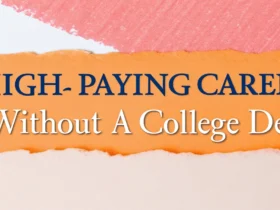

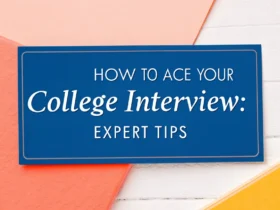
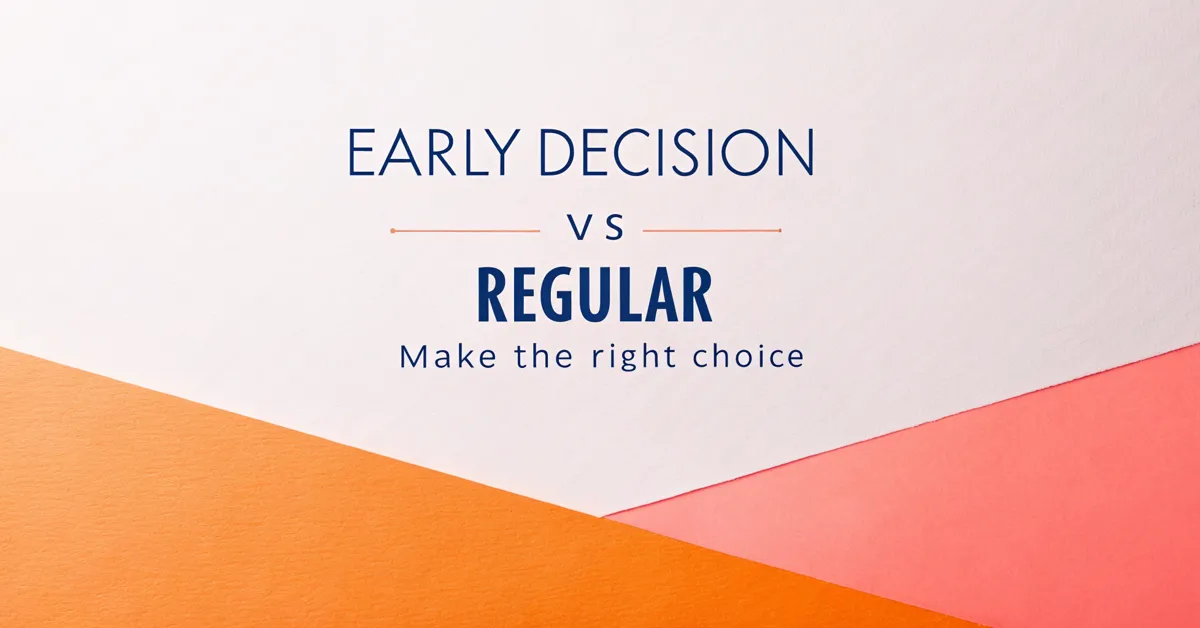
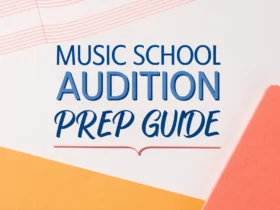






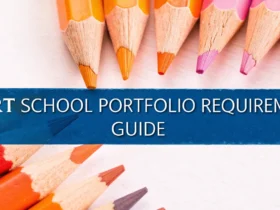
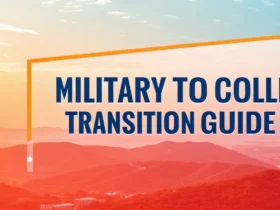
Leave a Reply
View Comments